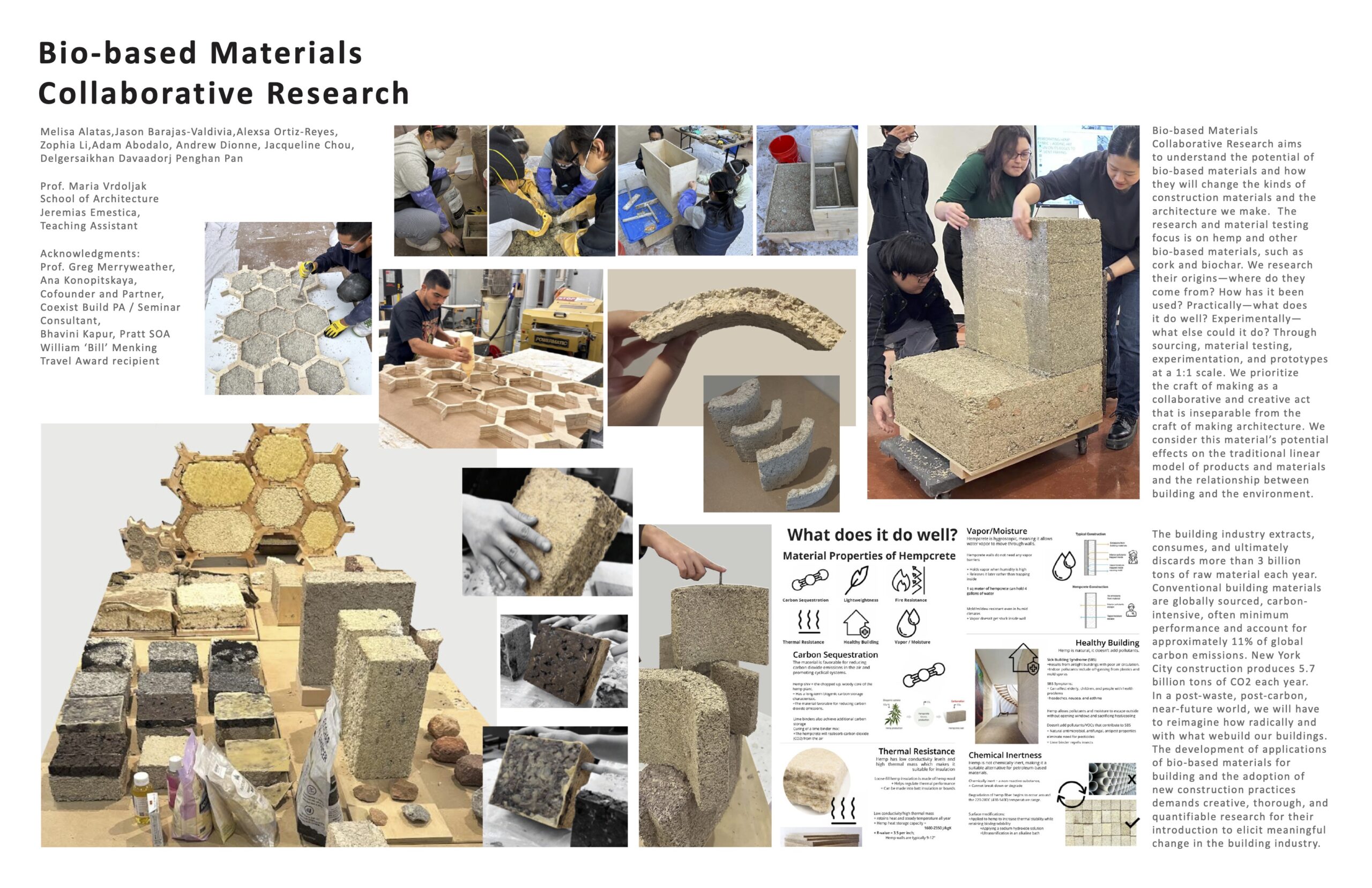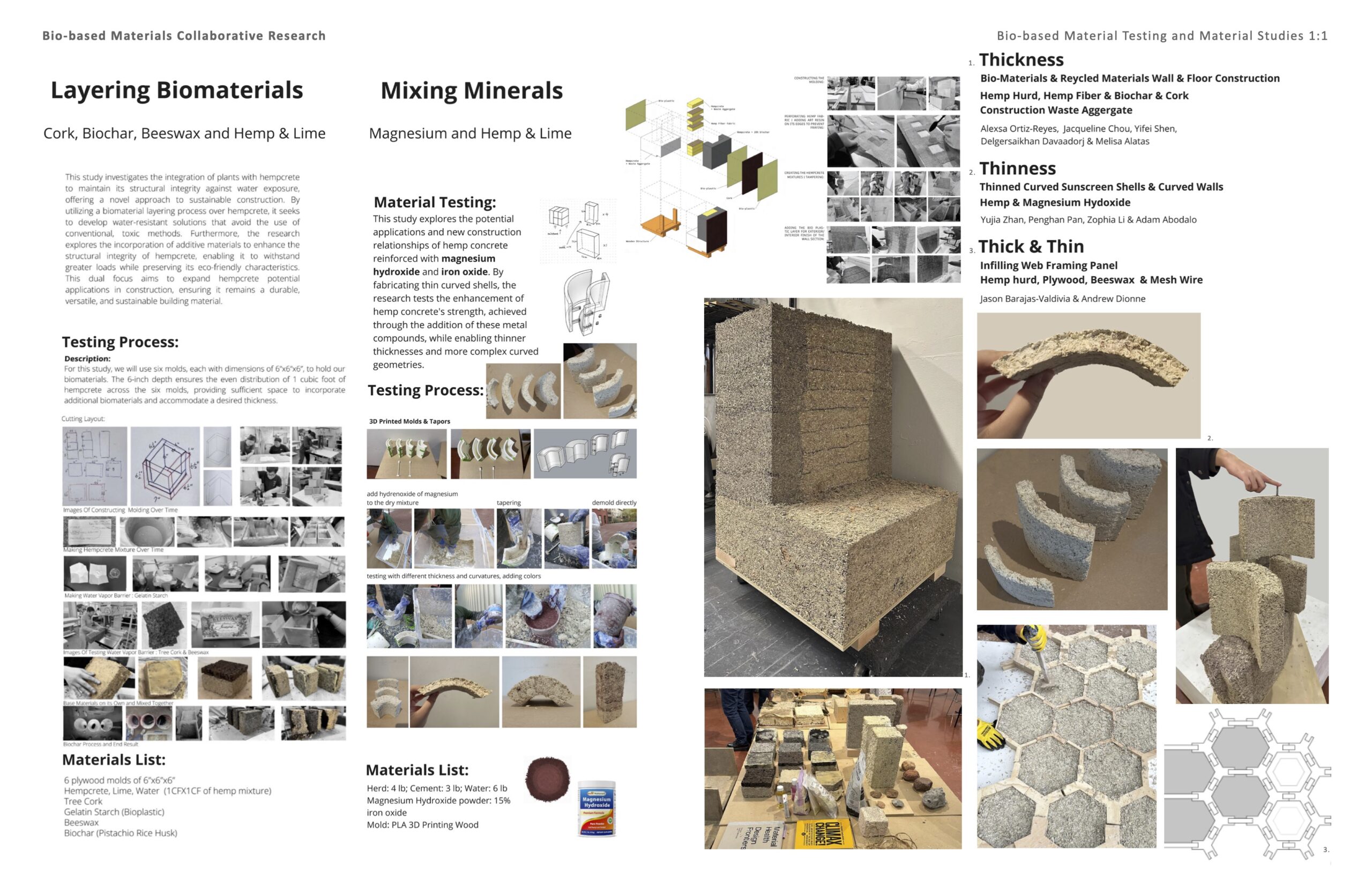Bio-based Materials Collaborative Research


Bio-based Materials Collaborative Research aims to understand the potential of bio-based materials and how they will change the kinds of construction materials and the architecture we make. The research and material testing focus is on hemp and other bio-based materials, such as cork and biochar.
We research their origins—where do they come from? How has it been used? Practically—what does it do well? Experimentally—what else could it do? Through sourcing, material testing, experimentation, and prototypes at a 1:1 scale.
The building industry extracts, consumes, and ultimately discards more than 3 billion tons of raw material annually.
Conventional building materials are globally sourced, carbon-intensive, often with minimum performance, and account for approximately 11% of global carbon emissions. New York City construction produces 5.7 billion tons of CO2 each year.
In a post-waste, post-carbon, near-future world, we will have to reimagine how radically and with what we build our buildings.
We prioritize the craft of making as a collaborative and creative act that is inseparable from the craft of making architecture. We consider this material’s potential effects on the traditional linear model of products and materials and the relationship between building and the environment.
